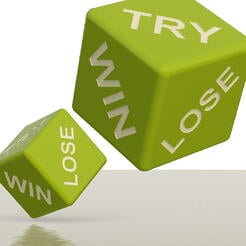CEO Blog - Advice for CEOs on growth and scaling
Learn from the Lost Bid, and Win the Next One


Winning is wonderful; losing is lousy and finding out why you have won or lost is serious business. It is also insightful and critical input to your marketing and sales execution effort.
The main goal for most organizations selling services or products is to win more business faster and more cost efficiently. And this often involves a bidding process. We can all relate to the stifling anxiety that comes from waiting for a response—and when unsuccessful at garnering the bid—those moments of depression. It can be an expensive and time-consuming effort to prepare a bid for a major opportunity.
With that said, companies often move on to the next prospect without considering the data that may be indispensable for future pursuits. Why a company won or lost a client’s business is just as important as the business itself, since it predicts future business.
Companies miss the opportunity to address poor sales practices and behaviors and over 80% of mid-to-large organizations lack a successful prescriptive approach and process for on-ongoing coaching at both the representative and sales management levels.
Many companies base their sales insights on comments and anecdotal stories from their salespeople. As Ken Allred, CEO Primary Intelligence, shared in a recent interview, “That is a dangerous approach. Salespeople only see the tip of the iceberg” Yet, surprisingly few companies implement a comprehensive win-loss review process as a part of their overall go-to-market strategy. Because of this, even fewer have a detailed or, at least working, understanding of why they were or were not successful, how they will improve the selling or bidding process or how to be more competitive for future bids and proposals. At its core, win-loss analysis is about uncovering the criteria, influencers and factors that are driving your buyers’ decisions.
Less than 1 in 5 companies performed any form of win-loss review on bids, and were therefore missing out on this valuable source of knowledge. Anova Consulting Group cites that prospects only share the complete truth with the losing salesperson about 40 percent of the time. Ken Allred argues that sales representatives do not know all of the questions they need to ask to be able to uncover a comprehensive view of the major impact items. He agrees salespeople may get key insights like one or two of the decision drivers, but they won’t get the full depth. That means, somewhere between 60 to 100 percent of all lost-sale situations, your company and your salespeople never get a complete and accurate explanation on why you lost and why a competitor won. It’s shooting in the dark.
Best Practice Process for Conducting Win-Loss Review with Clients
Understanding the intricacies of why a deal was won or lost is imperative if a business wants to improve their sales growth by increasing their win rate. These vital inputs can help evolve their methodology and messaging. If we probe about a lost opportunity, often we hear from the Sales Representative’s angle that the business was lost on price. But according to Carl Erickson, CEO of Beacon Worldwide, a sales transformation company, field research reveals that this is true only 15 percent of the time or less. Wouldn’t the other 85 percent be more enlightening for future bids?
What to do?
Start with defining who in your organization will own the ongoing win-loss review process. Yes - it needs an owner and regular inspection by the leadership team to really become a part of the organization’s culture. According to Ken Allred, CEO Primary Intelligence a Win-Loss review company, the process ownership is split 50-50 between Marketing and Sales Operations. The biggest reason cited for not conducting regular win-loss reviews is push-back from the Sales Organization. I strongly urge CEOs to assign the process for ownership outside the Sales function as much for the sales team as for the comfort and promoting of candid feedback from the client. The desired result is to improve the effectiveness of salespeople and their presentations by gathering insights that help you better position, package, differentiate and deliver your message.
Sound win-loss analysis delivers the opportunity to gain insight into many different areas of the product/service offering, competitive landscape, buyer’s journey and the seller’s relationships within the account – not to mention the opportunity to realize 10% more revenue. Beacon Worldwide begins their methodology with a timeline discussion and analysis of how and when the client’s needs emerged - who may have helped them refine those needs and in what way they could have been modified. How the client defines success, and did their definition of it change or evolve as they executed their buyer journey, is imperative to know. Additionally, you will want to understand what your competitors or the client may have done to improve or hurt your team’s ability to win. Determining if there was a real or perceived differentiator established by the other bidders is key to understanding the competitive landscape, and should direct your marketing tactics and sales enablement programs.
According to Carl Erickson CEO Beacon Worldwide, it is equally as important is to determine whether the deal was even winnable at all. How often do organizations spend resources on a bid when a reality check would indicate resources would be better spent elsewhere? In addition, this deep analysis can uncover adjustments that need to be made to enhance account relationships. When an opportunity is lost, it may be because a single stakeholder or small group of stakeholders in the prospective client firm voiced significant objections or created the perception of increased risk.
The objective of an effective loss analysis is to break the process down into individual steps that shed light on all of the processes and decisions to understand what was done correctly and what specifically needed improvement. It also allows the processes that are well-executed to be repeated and reinforced, while eliminating or adjusting other behaviors and processes that are not deemed beneficial. A side benefit to conducting a win-loss review is that it can help establish a relationship with the client. Clients see the investment made by an unsuccessful company in a win-loss review as a positive move, and positions that company as customer-focused, and therefore in a stronger position for the next potential opportunity.
According to Steve Martin, author of Heavy Hitter I.T. Sales Strategy: Competitive Insights from Interviews with 1,000+ Key Information Technology Decision Makers, his research shows there are 6 key factors to consider that can influence winning business.
1) Incumbent Advantage. The incumbent vendor has a huge sales cycle advantage and the tendency is for them to win business by default. The odds of unseating an incumbent vendor are typically about 20 percent.
2) Inability to Remove Risk. The ability to remove perceived risk plays a key role in determining who wins the deal.
3) C-Level Executive Access. There is a direct correlation between winning and the number interactions the salesperson has with C-level executives during the sales cycle.
4) Business Solution Focus. Often, both the winning and losing salespeople knew their products very well. However, winners were better able to prove their value as a business partner who had the expertise to solve the customer’s problem.
5) Ineffective Messaging. Successful communication is the cornerstone of all sales. Winners have the ability to tailor compelling messages that resonate with the various evaluators across and up and down the organization.
6) Poor Pre-sales Resources. The complex sales process is typically a team-related sales effort that involves pre-sales product and consulting experts. Losers were often cited as having inferior quality pre-sales resources and equally important, the lack of knowledgeable resources who consistently attended each meeting throughout the sales cycle.
7) Lack of an Internal Coach. A clear difference between winners and losers is that the winners developed an internal “coach” within the account.
8) Out-of-range Pricing. Time after time, interviewees reported they did not pick the least costly option. Savvy evaluators realize there will always be a low bidder. In reality, there is an acceptable price range that the prospect is willing to pay, and this can be anywhere from ten to twenty-five percent higher than the lowest proposal (depending upon industry and products being purchased). However, solutions priced outside of this boundary will rarely, if ever, be selected.
The Reasons Companies Don’t Engage in More Comprehensive Win-Loss Analysis.
With all the benefits a win-loss program can offer, there are number of reasons why organizations don’t engage in more comprehensive win-loss analysis. Culture, budget, resources and lack of collaboration are often cited. But if revenue is the most important goal and the win percentage is the greatest driver of revenue, then CEOs need to work harder to overcome the resistance. We have seen win-loss programs increase win rates by at least 10%, and that translates directly to a 10% plus revenue increase.
Overall, the ability for a company to stay marketable, competitive and customer-centric is the ability to be a fluid and approachable provider in their field. If a client feels that you are meeting their needs, despite other lower companies’ bids, regardless of the price of the bid you place, and in alignment with the relationship you have established prior or during the bidding process, you will increase your accepted bids. As Rick Warren states in the Purpose Driven Life, We are products of our past, but we don't have to be prisoners of it. It’s time to learn systematically from our mistakes by incorporating win-loss review as a core management process and give it Leadership team level visibility and inspection. Then, everybody wins!
Mon, Oct 6, 2014Featured Chief Outsider
/cmo-Karen-Hayward.jpg?width=200&height=200&name=cmo-Karen-Hayward.jpg)
Karen Hayward
Related Articles

- Press Releases
- Careers
- Case Studies
- Marketing Consultant Company
- Marketing Strategy Consultants
- Marketing Plan Consultants
- B2B Marketing Consultants
- Virtual CMO
- Marketing Consultant Outsourcing
- Fractional CMO
- What is a Fractional CMO
- Healthcare Marketing Consultant
- Marketing Consultant Houston TX Texas
- Marketing Consultant Texas TX
- Marketing Consultant Bay Area
- CEO Blog
- Ebooks Plus
- Executive Marketing Consultants
- Product Marketing Consultants
- B2C Marketing Consultants
- Virtual Marketing Consultants
- Senior Marketing Consultants
- Temporary CMO
- Hire a CMO
- Fractional CMO Salary
- Fractional CMO Responsibilities
- Marketing Consultant Austin TX Texas
- Marketing Consultant Dallas TX Texas
- Marketing Consultant San Antonio
- Helping Private Equity
- Private Equity Blog
- Leadership Team
- Privacy Policy
- Business Marketing Consultants
- Strategic Marketing Consultants
- Marketing Technology Consultants
- Sales and Marketing Consultants
- CMO Job Description
- CMO Salary
- Fractional CMO Agency
- Fractional CMO Services
- CPG Marketing Consultant
- Marketing Consultant San Diego
- Partners
Houston, TX 77056
© 2023 Chief Outsiders

